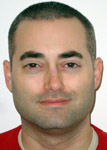On 1 October 2011, the former CBRN (Chemical, Biological, Radiological, Nuclear) Consequence Management Response Force (CCMRF) was upgraded by the U.S. Department of Defense to what is now officially designated as the Defense CBRN Response Force (DCRF). The upgrading is much more than a mere name change because the U.S. Northern Command’s DCRF possesses not only more robust capabilities than the CCMRF but also the ability to respond much more rapidly to a CBRN event.
The DCRF is the active-duty component of the new CBRN Response Enterprise – which includes not only National Guard units, but also the other federal forces trained and prepared to respond to a CBRN event anywhere throughout the United States and its territories. Joint Task Force Civil Support, also under the U.S. Northern Command, serves as the DCRF’s operational headquarters to provide continuous guidance and support and to ensure that it is always fully prepared to respond to the nation’s needs during times of crisis.
In that context, it should be emphasized that the DCRF does not supplant or replace any local, state, or other federal authority. Rather, it supports those authorities by providing response capabilities that local and state as well as other federal agencies request during a CBRN incident or event. If a state requires assistance, the governor of that state would request federal assistance from the President – and the Department of Defense would be one of the possible responders.
Force-Flow Flexibility After being approved for deployment, the DCRF would fill the requests for assistance submitted by state and local governments and approved by the President – as would other federal agencies such as the Department of Health and Human Services (HHS) and the Federal Emergency Management Agency (FEMA).
A major ancillary benefit provided by the DCRF’s capabilities is that the response usually can be scaled and tailored more precisely to meet the specific needs requested. The personnel assistance provided, for example, could range from the deployment of relatively small advisory teams to the use of the DCRF’s entire 5,200-man response force. Moreover, if additional resources are needed, the DCRF could deploy even more personnel – as well as large quantities of the supplies that also would be needed.
According to the U.S. Army’s “2011 Army Posture Statement,” the U.S. Transportation Command will be able to deploy large DCRF forces to the incident scene both quickly and safely – typically by using a pre-written “force flow” contingency plan that calls for the first 2,100 personnel and their equipment to deploy within 24 hours of activation, and the remaining 3,100 personnel postured to deploy within 48 hours.
The Medical Component: Bigger, Faster, More Responsive Under the DCRF construct, medical response capabilities have been increased by almost 60 percent. As a result, the new response force will be able to respond twice as fast as was possible under the CCMRF system. Out of the 5,200-man DCRF force, 1,051 are medical personnel; that percentage reflects the importance of providing lifesaving care and force health protection both during and after a major CBRN event.
The medical component of the DCRF, officially designated “Task Force Medical,” possesses significant personnel and equipment capabilities (provided by both the Army and Air Force) including but not limited to the following: 50 beds, 160 treatment/holding cots, 84 ambulances, 12 operating tables, patient decontamination and movement teams, and a specialized force of CBRN health-protection experts.
Today, the DCRF stands ready to respond, as directed by the President, in support of civil authorities to do whatever is needed to save lives, prevent further injuries, and provide temporary critical support to facilitate community recovery. The 86 different military units that comprise the DCRF (during one- to two-year mission rotations) are stationed at 37 different bases throughout the United States – which means, of course, that there will almost always be at least one DCRF unit in position to quickly respond when a CBRN incident occurs.
Moreover, to keep its teams fully trained and ready to rapidly deploy on short notice, the DCRF conducts numerous drills and exercises each year, including a major annual field training and certification exercise. The DCRF, through its headquarters Joint Task Force Civil Support – located in Fort Eustis, Virginia – is already building closer relationships with local, state, and federal agencies to better prepare a synergistic, whole-of-government approach both before and during incident responses.
____________
For additional information on: The “2011 Army Posture Statement,” visit https://secureweb2.hqda.pentagon.mil/VDAS_ArmyPostureStatement/2011/information_papers/PostedDocument.asp?id=261

Jamie Stowe
Major Jamie Stowe, USAF, is a medical plans and operations officer who has more than 14 years of experience in emergency planning and response operations with the U.S. Air Force and the U.S. Army. He has not only completed a Department of Defense planning fellowship but also has been directly involved in numerous contingency operations – including those following Hurricanes Rita, Ike, Gustav, and Sandy, the Japanese tsunami and nuclear plant responses, and the 2010 earthquake in Haiti. He holds a master’s degree in Business Administration and is currently pursuing a master’s degree in National Security and Strategic Studies from the U.S. Naval War College.
-
Jamie Stowehttps://www.domesticpreparedness.com/author/jamie-stowe
-
Jamie Stowehttps://www.domesticpreparedness.com/author/jamie-stowe
-
Jamie Stowehttps://www.domesticpreparedness.com/author/jamie-stowe






